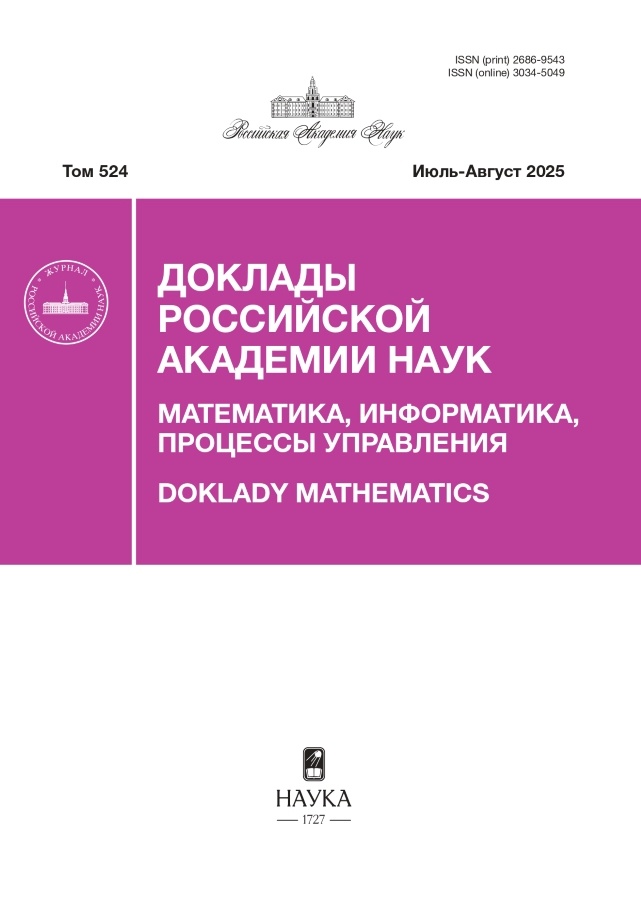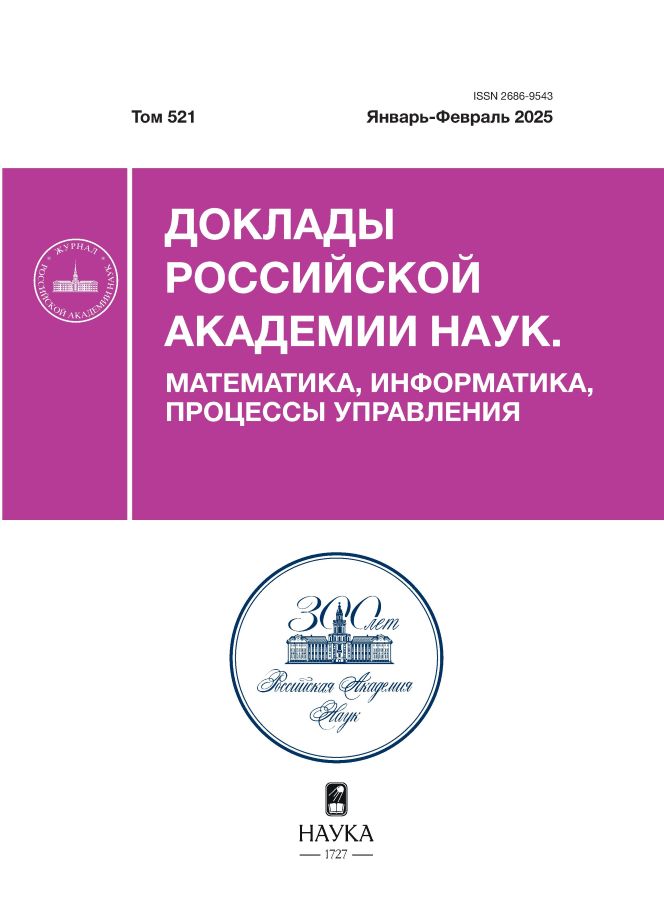ON THE DETERMINISM OF PATHS ON SUBSTITUTION COMPLEXES
- Authors: Ivanov-Pogodaev I.A1
-
Affiliations:
- Moscow Institute of Physics and Technology
- Issue: Vol 521 (2025)
- Pages: 43-62
- Section: MATHEMATICS
- URL: https://ruspoj.com/2686-9543/article/view/683151
- DOI: https://doi.org/10.31857/S2686954325010073
- EDN: https://elibrary.ru/BTFBYV
- ID: 683151
Cite item
Abstract
The work is devoted to the study of the combinatorial properties of determinism for a family of substitution complexes consisting of quadrangles glued together side-to-side. These properties are useful in constructing algebraic structures with a finite number of defining relations. In particular, this method was used to construct a finitely defined infinite nilsemigroup satisfying the identity x9 = 0. This construction solves the problem of L.N. Shevrin and M.V. Sapir. In this paper, we study the possibility of coloring the entire family of complexes in a finite number of colors, for which the weak determinism property is satisfied: if the colors of the three vertices of a certain quadrilateral are known, then the color of the fourth side is uniquely determined, except in some cases of a special arrangement of the quadrilateral. Even weak determinism is enough to construct a finitely defined nilsemigroup; when using this construction, the proof is reduced in scope. The properties of determinism were studied earlier within the framework of the theory of tessellations; in particular, Kari and Papasoglu constructed a set of square tiles that allowed only aperiodic tessellations of the plane and had determinism: the colors of the two adjacent edges were uniquely determined by the colors of the two remaining edges.
References
- Wang Hao. Proving theorems by pattern recognition—II, Bell System Tech. Journal 40(1):1-41, 1961.
- Berger R., The undecidability of the domino problem, Ph.D. thesis, Harvard University, July 1964.
- Mozes S. Tilings, substitution systems and dynamical systems generated by them., J. Analyse Math 53 (1989), no. 1, 139-186.
- Goodman-Strauss C. Matching rules and substitution tilings. Ann. of Math. (2) 147 (1998), no. 1, 181-223. 41-82.
- Robinson R.M., Undecidability and nonperiodicity for tilings of the plane, Inventiones Mathematicae 12 (1971), 177-209.
- Conway J., Lagarias J. Tiling with polyminoes and combinatorial group theory./ J. Combin. Theory Ser. A. 1990. V. 53, 2, 183-208.
- Grunbaum B., Shephard G.C. Tilings and patterns, Freemann, NY 1986.
- Свердловская тетрадь: Нерешенные задачи теории полугрупп. Выпуск 3, 1989. — 40 с.
- Kari J, Papasoglu. Deterministic aperiodic tile sets. GAFA, Geom. funct. anal. Vol. 9 (1999) 353-369.
- Иванов-Погодаев И.А., Канель-Белов А.Я. Конечно определенная нильполугруппа: комплексы с равномерной эллиптичностью, Изв. РАН. Сер. матем., 2021, том 85, выпуск 6, страницы 126-163.
- Иванов-Погодаев И.А., Канель-Белов А.Я. Детерминированная раскраска семейства комплексов // Фундамент. и прикл. матем., 24:2 (2022), 37-180.
- Белов-Канель А.Я., Иванов-Погодаев И.А., Конструкция бесконечной конечно определенной нильполугруппы, Доклады РАН. Математика, информатика, процессы управления, 101:2 (2020), 81-85.
Supplementary files











